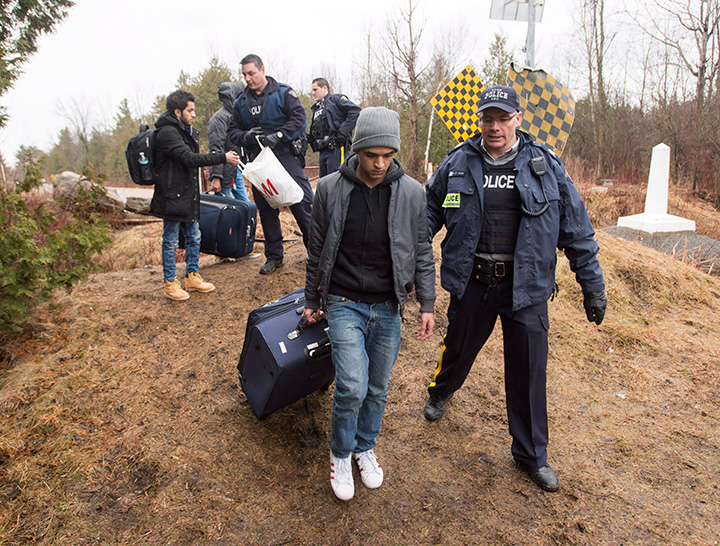The number of asylum seekers crossing the Canadian border illegally continued to rise in March, according to new numbers released by the Department of Citizenship and Immigration on Wednesday.

The numbers for March were a long time coming, but they show a steady increase of asylum seekers being intercepted by the RCMP in Quebec (from 432 in February to 644 in March) and Manitoba (from 142 in February to 170 in March).
READ MORE: Are asylum seekers ‘queue jumping’ and other key questions
In British Columbia, the numbers actually dropped, from 84 interceptions in February to 71 in March.
No other provinces saw more than one interception by police.
In total, 1,680 asylum claims were made in March (whether inland or at a border crossing), up from 1,465 in February.
Since Jan. 1, 2017, 4,350 people have claimed asylum in Canada at a marine, land or airport port of entry. Not all will see their applications approved. The department has been clear that there is no such thing as a “free ticket to Canada.”
WATCH: Where do asylum seekers go and what are the costs to taxpayers?

The number of asylum seekers fluctuates year to year, but Canadian authorities have been particularly concerned this winter and spring by the increasing prevalence of people trying to cross illegally on foot.
The union representing Canada’s border guards has warned that resources are not adequate to deal with the influx of people crossing at illegal points along the border in order to avoid being sent back to the U.S under the Safe Third Country Agreement.
The government, however, disputes that. A spokesperson for Public Safety Minister Ralph Goodale said Wednesday that the Canada Border Services Agency and the RCMP “have made internal adjustments to ensure they have the right personnel and tools in the right places to deal with existing circumstance safely and securely.”
The spokesperson added that “as the situation evolves, these professional organizations will advise as to what extra resources may be required.”
Under the Safe Third Country Agreement, asylum seekers who cross at a legal checkpoint are automatically sent back (with a few exceptions) because they were on U.S. soil first. But crossing away from a border checkpoint results in being arrested and taken to a local immigration or border services office, where a claim for asylum can be made.
A recent poll showed Canadians overwhelmingly want to see change in how the system treats asylum claimants.
In a prepared statement, Goodale’s office said Canadian authorities are managing the increase in asylum seekers “in a sound and measured way, applying our laws and procedures to keep Canadians safe while fully respecting all of this country’s international obligations.”
WATCH: Trump’s travel ban was ‘a trigger point’ for some asylum seekers to Canada, says Goodale

The minister has stated repeatedly that most of the migrants are holders of visas for the United States and have already passed a U.S. security screening. Once in Canada, they receive further screening from the RCMP and CBSA, including medical and criminal record checks.
- What is a halal mortgage? How interest-free home financing works in Canada
- Capital gains changes are ‘really fair,’ Freeland says, as doctors cry foul
- Ontario doctors offer solutions to help address shortage of family physicians
- Budget 2024 failed to spark ‘political reboot’ for Liberals, polling suggests




Comments